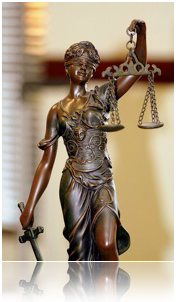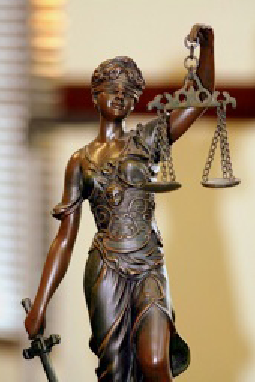Justice Jackson’s Brilliant Debut
On her second day of oral argument at the Supreme Court, Justice Ketanji Brown Jackson showed the wisdom of her appointment and confirmation. A short clip of one of her questions in Merrill v. Milligan made the rounds on Twitter, giving everyone a taste of her skill and understanding. Her point was so powerful I wondered how the lawyer responded.
The case involves an Alabama redistricting map. Plaintiffs alleged that the map unfairly discriminated against Black voters by reducing the number of majoirity-minority congressional districts unfairly. A three-judge district court ruled that the map violated Section 2 of the Voting Rights Act.
Here’s a fairly neutral discussion of the legal context in which the case was argued. Sec. 2 gives individuals the right to sue to prevent any state action to dilute minority voting power. The leading case on Sec. 2 is Thornburg v. Gingles, 478 US 30 (1986). The case sets out three factors which the plaintiff must prove to establish a violation of Sec. 2.
1.The racial or language minority group is “sufficiently large and geographically compact to constitute a majority in a single-member district”;
2. The minority group is “politically cohesive” (meaning its members tend to vote similarly); and
3. The “majority votes sufficiently as a bloc to enable it … usually to defeat the minority’s preferred candidate.”
The colloquy between Justice Jackson and Alabama Solicitor General Edmond Lacour concerns the first Gingles test. Lacour argues that plaintiffs were required to present a race-neutral map as a benchmark to show that Alabama’s map diluted Black voting power. The transcript can be found here. We start at page 52. Justice Amy Coney Barrett asks Lacour this question:
…if you were forced to adopt a map proposed by the plaintiffs that was racially gerrymandered because race was predominant in its drawing, that you would be violating the Fourteenth Amendment.
Therefore, the first factor of Gingles required to get past the hurdle that Justice Jackson was talking about, to get past that hurdle, it required race neutrality.
Is that your central argument?
MR. LACOUR: Yes, that –that is our core argument that it –it cannot be that they can come forward with a map that we would never be allowed to draw, call it reasonably configured and then force us to draw a map we would never be allowed to constitutionally draw.
You can think of that either –the problem is either race predominance or the problem is, when race enters in to the equation, then traditional districting principles necessarily have to yield, which is what the district court found on page 214 of the Milligan stay appendix, non-racial considerations had to yield to race.
He’s saying that the Constitution bars Alabama from drawing a map that uses race to create majority Black districts. After further discussion, Justice Jackson takes over.
JUSTICE JACKSON: Yes. I am so, so glad for Justice Barrett’s clarification because I had the same thought about what you were arguing, and I’m glad that you clarified that your core point is that the Gingles test has to have a race-neutral baseline or that the –the first step has to be race-neutral.
And –and what I guess I’m a little confused about in light of that argument is why, given our normal assessment of the Constitution, why is it that you think that there’s a Fourteenth Amendment problem? And let me just clarify what I mean by that.
I don’t think we can assume that just because race is taken into account that that necessarily creates an equal protection problem, because I understood that we looked at the history and traditions of the Constitution at what the framers and the founders thought about and when I drilled down to that level of analysis, it became clear to me that the framers themselves adopted the equal protection clause, the Fourteenth Amendment, the Fifteenth Amendment, in a race conscious way.
That they were, in fact, trying to ensure that people who had been discriminated against, the freedmen in –during the reconstructive –reconstruction period were actually brought equal to everyone else in the society.
So I looked at the report that was submitted by the Joint Committee on Reconstruction, which drafted the Fourteenth Amendment, and that report says that the entire point of the amendment was to secure rights of the freed former slaves.The legislator who introduced that amendment said that “unless the Constitution should restrain them, those states will all, I fear, keep up this discrimination and crush to death the hated freedmen.”
That’s not –that’s not a race-neutral or race-blind idea in terms of the remedy. And –and even more than that, I don’t think that the historical record establishes that the founders believed that race neutrality or race blindness was required, right? They drafted the Civil Rights Act of 1866, which specifically stated that citizens would have the same civil rights as enjoyed by white citizens. That’s the point of that Act, to make sure that the other citizens, the black citizens, would have the same as the white citizens. So they recognized that there was unequal treatment, that people, based on their race, were being treated unequally.
And, importantly, when there was a concern that the Civil Rights Act wouldn’t have a constitutional foundation, that’s when the Fourteenth Amendment came into play. It was drafted to give a foundational –a constitutional foundation for a piece of legislation that was designed to make people who had less opportunity and less rights equal to white citizens.
So with that as the framing and the background, I’m trying to understand your position that Section 2, which by its plain text is doing that same thing, is saying you need to identify people in this community who have less opportunity and less ability to participate and ensure that that’s remedied, right? It’s a race-conscious effort, as you have indicated. I’m trying to understand why that violates the Fourteenth Amendment, given the history and -and background of the Fourteenth Amendment?
Lacour says:
The Fourteenth Amendment is a prohibition on discriminatory state action. It is not an obligation to engage in affirmative discrimination in favor of some groups vis-à-vis others.
That contradicts what Justice Jackson just said. She repeats her point using shorter words. Lacour repeats his earlier statement that Alabama shouldn’t have to sacrifice “other redistricting principles” for the sake of racial fairness unless plaintiffs prove Alabama’s map is discriminatory. He says plaintiffs have to prove specific racial discrimination before thay can use race as a factor in drawing lines. That would require plaintiffs to produce a race-neutral map as a matter of evidence. Justice Jackson says that the point of the Gingles test is to make that determination as required by Sec. 2. Lacour says:
Not if they’re allowed to sacrifice our principles to come up with their maps.
“They” refers to the Black Plaintiffs. Justice Jackson pokes at this response and Lacour says some words. Roberts moves to the next lawyer.
Discussion
1. Justice Jackson is right on the original purpose of the Fourteenth Amendment. In The Slaughter-House Cases SCOTUS construed it so narrowly that it became useless for equalizing government treatment of newly freed slaves, or anyone else, except in very rare cases. But recent scholarship has recovered the original intent. See, e.g. R. Barnett and E. Bernick, The Original Meaning Of The Fourteenth Amend: It’s Letter And Spirit (2018). I haven’t read this book, but based on reviews, it generally tries to extricate the original breadth of the Fourteenth Amendment in Line with Justice Jackson’s analysis. Barnett is a well-known originalist.
2. Lacour’s position is absurd. How can you not laugh at the idea that Alabama has sacred principles of drawing district lines? Of course it does: draw the lines so White people always win. Even if we could imagine some other principle, why should it be so important as to justify diluting minority voting power?
3. John Roberts has devoted his career to destroying the Voting Rights Act. The other right-wingers follow him because it suits their own partisan purposes. They all follow in the tradition of the revanchist SCOTUS of the Slaughter-House Cases. The idea that the Fourteenth Amendment is color-blind is madness.
4. The six right-wingers pretend that their decisions are guided by originalism. When this opinion comes out, look for the tortured logic dismissing the originalist argument so clearly laid out by Justice Jackson.
5. The coward Ben Sasse said that he couldn’t vote to confirm Justice Jackson because he only supported originalists. Obviously she is intellectually rigorous, using originalism as one of the tools of interpretation, just as she said in her confirmation hearing. The six right-wingers only care about original intent when it can be made to fit their preferred outcome.
6. The revanchist six claim that their opinions are driven by their judicial philosophy, not by political ends. They scold their critics for questioning their legitimacy. But the reality is that their so-called judicial philosophy is indistinguishable from right-wing Republican ideology.



